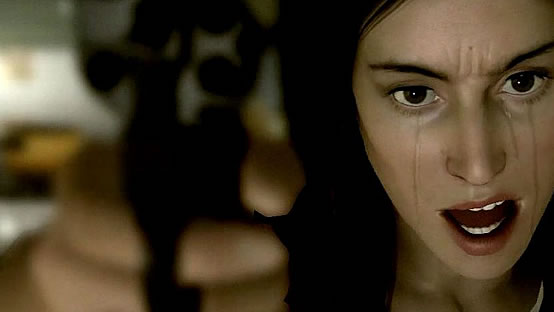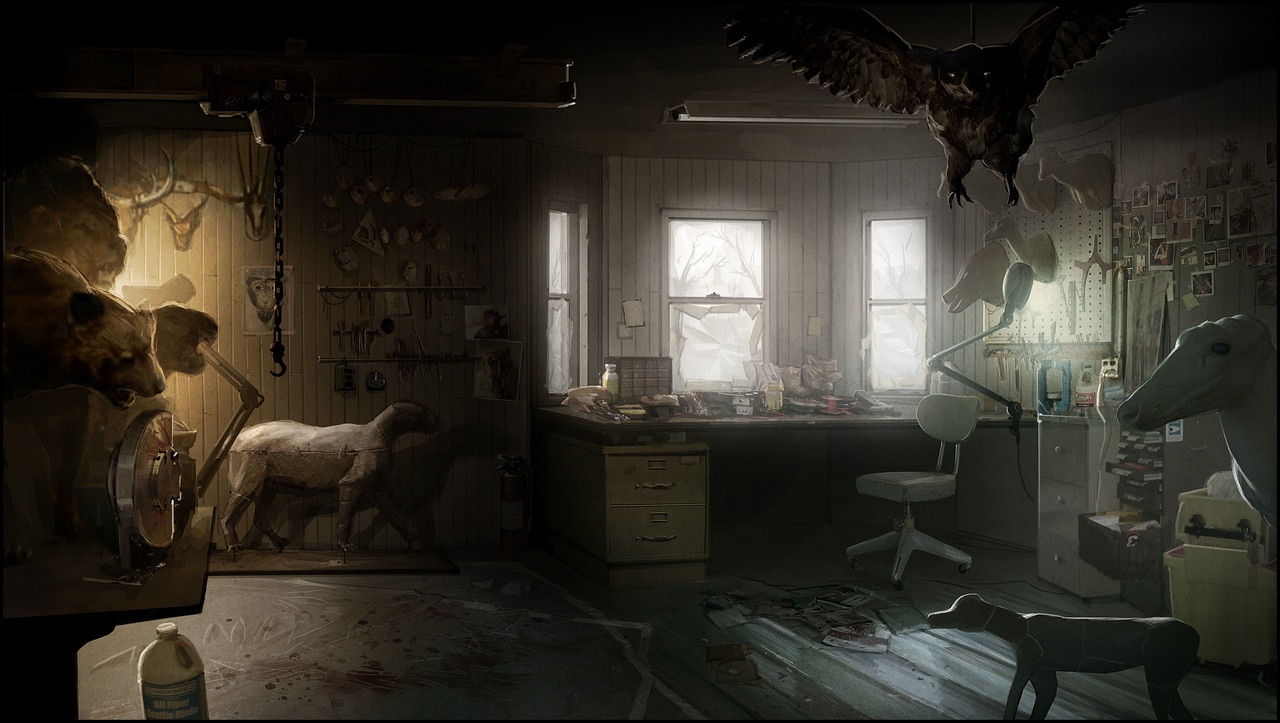The Uncanny (the eerie, the un-homely) is present when a state of familiarity invokes a repressed fear (usually from childhood) in which objects, settings & even people appear to be more or less then what they are required to be by the rules of the physical world.
“…the uncanny is that species of the frightening that goes back to what was once well known and… familiar.” (Freud, 1919: 124)For example:
• A machine, doll or inanimate object suddenly appearing out of place or looking uncharacteristically like a real person creating certain insecurities, this is linked to something known as the uncanny valley where our distinction of the real affects the artificial sense of the real.
“...One of the surest devices for producing slightly uncanny effects through story-telling, writes Jentsch, is to leave the reader wondering whether a particular figure is a real person or an automaton...” (Freud, 1919: 135)
• A number, location and or/term repeated multiple times throughout a day or period, this is attributed somewhat to Déjà-vu (i.e. the feeling that we have been somewhere before but for one or more reasons have repressed the information with only key attributes arising - hinting).
“...There is certainly nothing remarkable, for instance, about depositing a garment in a cloakroom and being given a ticket with a certain number on it – say 62 – or about finding that the cabin one has been allocated bears this number. But the impression changes if these two events, of no consequence in themselves, come close together, so that one encounters the number 62 several times in one day...” (Freud, 1919: 144)
• Ghosts & Spirits that are demonic - rising from our repressed fears of the afterlife, this is in many cases attributed to the points above (i.e. a doll/person being possessed or a location of evil intent constantly haunting &/or controlling its host(s)).
“Two factors account for this lack of movement: the strength of our original emotional reactions and the uncertainty of our scientific knowledge. Biology has so far been unable to decide whether death is the necessary fate of every living creature or simply a regular, but perhaps avoidable contingency within life itself.” (Freud, 1919: 148)
• The Mirror, the emergence of the doppelganger – a second version of its viewer, similar in every which way visually, it is believed that internally the doppelganger is the opposite of a person so if one is good then no doubt the opposing version of one is bad.
“Its uncanny quality can surely derive only from the fact that the double is a creation that belongs to a primitive phase in our mental development, a phase that we have surmounted, in which it admittedly had a more benign significance. The double has become an object of terror, just as gods become demons after the collapse of their cult.” (Freud, 1919: 143)
Isolation is also a significant factor of the Uncanny when instances of which are familiarly populated (i.e. a train station, a house or a city) that are suddenly isolated with no apparent reason building a climax of uncanny suspense. This illusion of suspense or disarray is somewhat partially broken when a cause is confirmed (a logical or illogical reason).
“One would suppose, then, that the uncanny would always be an area in which a person was unsure of his way around: the better oriented he was in the world around him, the less likely he would be to find the objects and occurrences in it uncanny.” (Freud, 1919: 125)Images utilizing the Uncanny feel incomplete with a larger tale to tell, this is based in no small degree to the feeling of an un-complete thought, the loss, or jarring of a familiar situation begging a constant question with no tangible answer.
It is only when a definable illustrator is assigned that a genre or platonic situation can be designated to the image in question.
Consider this for example:
An image set in a deserted house; stuffed animals are everywhere looming in a haze. This could mean any number of things.
• Could the animals start moving?
• Is the owl looking at me?
• Are they actually dead?
• What is going on outside?
• Who owns this house?
The situation is un-nerving because no questions can be answered and no practical understanding can be considered – it is a room full of animals, which could mean any number of things. But, the second you glance at the blood on the floor you are left to consider the most obvious automatically assigning a genre – Horror giving one some degree of understanding – which is close but certainly not uncanny.
Conclusion
The Uncanny is the familiar but unfamiliar, the confirmed and the unconfirmed, the connecting edges that blur the real with the surreal. The Uncanny is where anything can be considered possible in a realistic setting or situation. A perfect term one could attribute to the uncanny is “Uncertainty” where one cannot depict the truth, forcing one to draw from their own repressed feelings of the un-homely to ultimately draw their own conclusion.
List of Illustrations
Figure 1. Sigmund Freud. (com) [Online image]. At: http://25.media.tumblr.com/tumblr_lkrq7igYSi1qieaneo1_500.jpg (Accessed on:01/12/11)
Figure 2. Heavy Rain. (com) [Online image]. At: http://gamingbolt.com/wp-content/uploads/2010/01/heavyrain1.jpg (Accessed on:01/12/11)
Figure 3. Lost, Recurring Numbers. (com) [Online image]. At: http://images.wikia.com/lostpedia/images/1/15/Hatchnumbers.jpg (Accessed on:01/12/11)
Figure 4. The Walking Dead, Zombie. (com) [Online image]. At: http://thewalkingdeadpodcast.com/wp-content/uploads/2010/06/hr_The_Walking_Dead.jpg (Accessed on:01/12/11)
Figure 5. Black Swan, Doppelganger. (com) [Online image]. At: http://svdpfrankenstein2011.wikispaces.com/file/view/Natalie-Portman-Black-Swan-mirror-image.jpg/222995180/Natalie-Portman-Black-Swan-mirror-image.jpg (Accessed on:01/12/11)
Figure 6. 28 Days Later, Isolation. (com) [Online image]. At: https://blogger.googleusercontent.com/img/b/R29vZ2xl/AVvXsEhtL4W2zwIjpBrRKaA_3tfJgxmwqKvJfkbcebtu60vA4zaYntAh7bSVb8NxDCdlgek2ujXC204zlUg4aQQhyJr8DuT3J0hdukXx3oQlluEpRoL8D2jUii5De9p6prLmnR-y_EeaHH9y8aU/s1600/28-days-later.jpg (Accessed on:01/12/11)
Figure 7. Heavy Rain, Taxidermist Concept Art. (com) [Online image]. At: http://www.videogamesblogger.com/wp-content/uploads/2009/12/heavy-rain-house-wallpaper-concept-art.jpg (Accessed on:01/12/11)
Bibliography
Sigmund, Freud. (1919) Essay on The Uncanny, Penguin Classics, 1st Edition
(Accessed on: 01/12/11)








great, Stitch - getting a strong theoretical understanding of the subject will ensure a literate response. :)
ReplyDelete